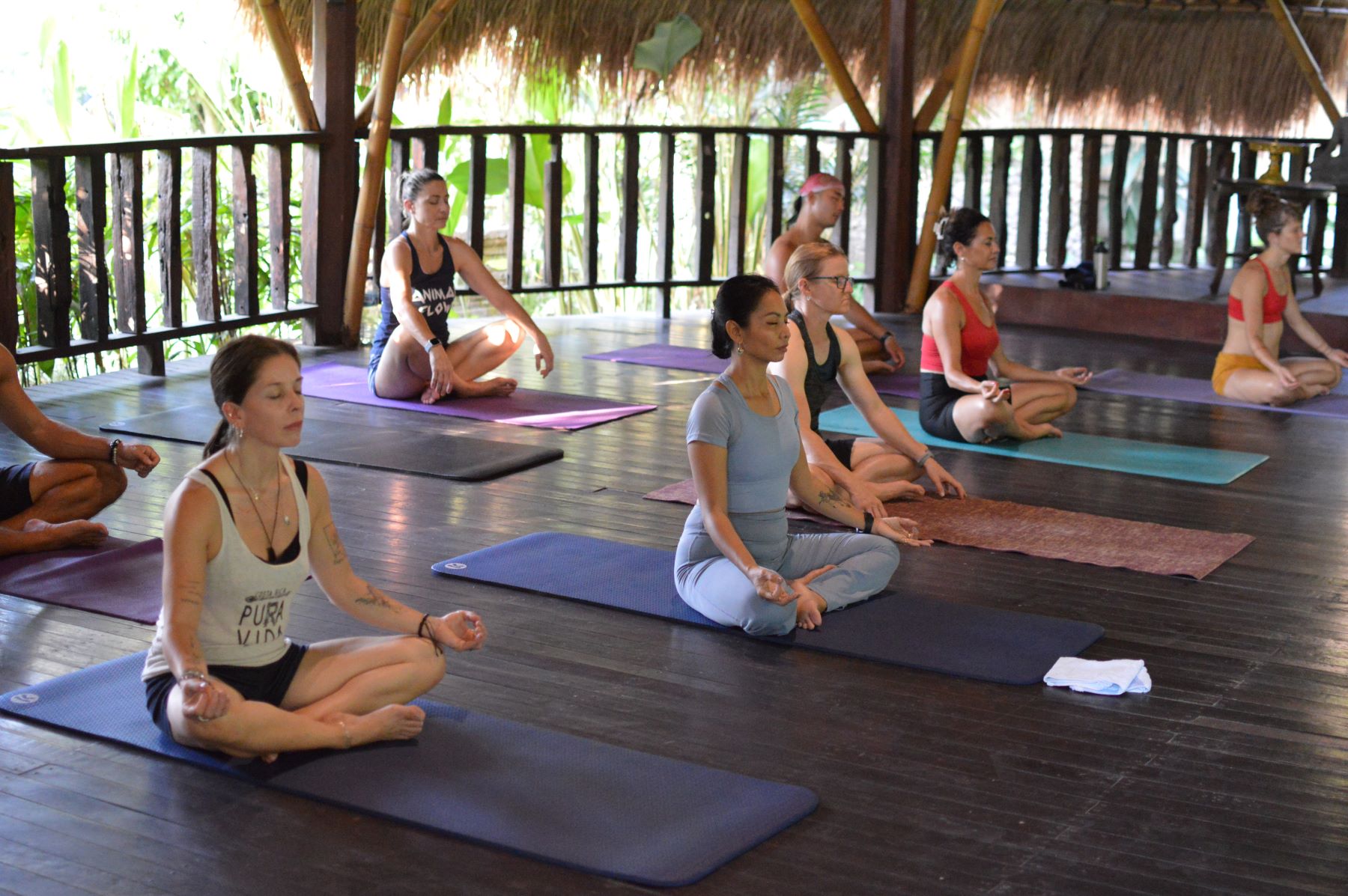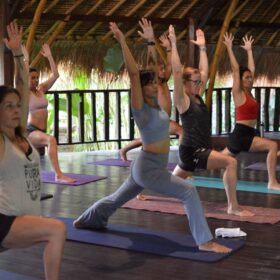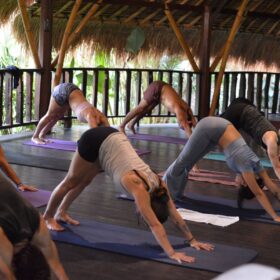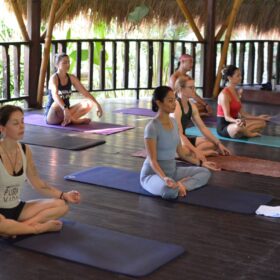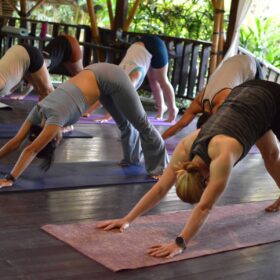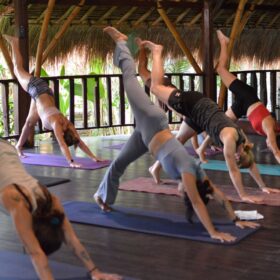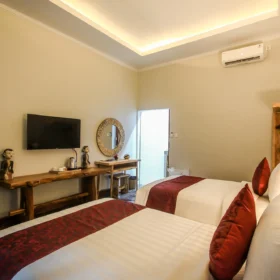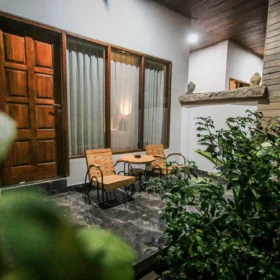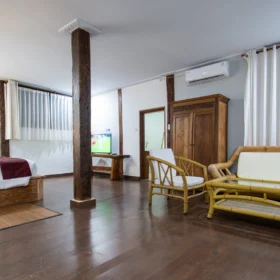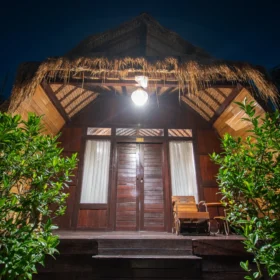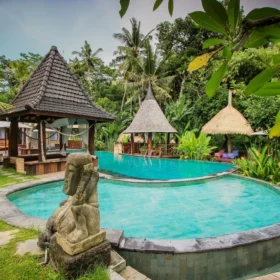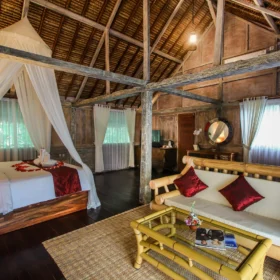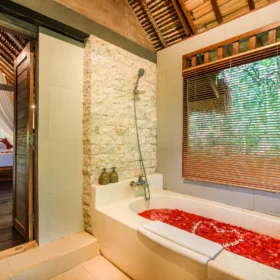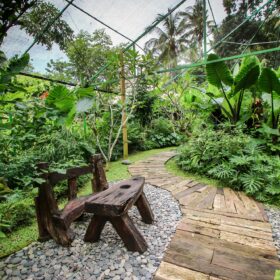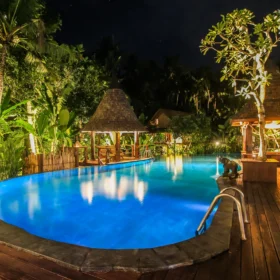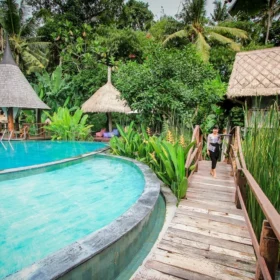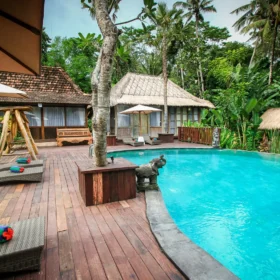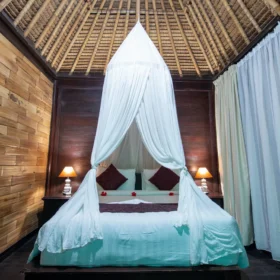Yoga Teacher Training Bali
Yoga Alliance Certified Yoga School in Bali – Your Journey of Transformation Begins Here
Deepen Your Practice. Awaken the Teacher Within. Live the Bali Magic.
Yoga Teacher Training in Bali Embark on a soul-enriching journey with our Yoga Alliance 200-Hour YTT in Bali. Guided by master teachers from India, Experience a life-changing journey through this immersive Yoga Teacher Training, which offers deep transformation—awakening your inner wisdom, elevating your practice, and preparing you to share the ancient science of yoga with the world.
At the heart of our approach is personalization. Keeping our Class 12 to 15 Students, Our yoga teacher training in Bali uses the best approach in training the students in modern way, but staying true to the roots of yoga. Every training is carefully tailored, and we thoughtfully assemble our teaching team to ensure the highest quality of guidance and support.
Our immersive Yoga TTC blends Hatha, Vinyasa, Ashtanga, and Yin Yoga, while integrating yoga philosophy, anatomy, meditation, pranayama, and Ayurvedic wisdom. Established in 2018, our Yoga Teacher Training programs have guided aspiring teachers from around the world through transformative learning experiences.
Ruh Yoga, known for its soulful trainings in Goa, now offers the same authentic, heart-centered approach in a new, peaceful Bali setting. Our Bali YTT is designed to support deep self-discovery and holistic learning. We are Partnered with Keramas Sacred River Resort in the heart of lush rice fields, sacred temples, and serene beaches create the perfect backdrop for your inner journey. Experience the charm of Balinese living in peaceful accommodations nestled among vibrant rice paddies, perfect for deep relaxation. Whether you’re here for a yoga teacher training or a soulful retreat, you’ll feel Bali’s magic the moment you arrive.
Ready to embark on your yoga teaching adventure? connect with us at ruhyoga@gmail.com
Connect With Your Inner Self
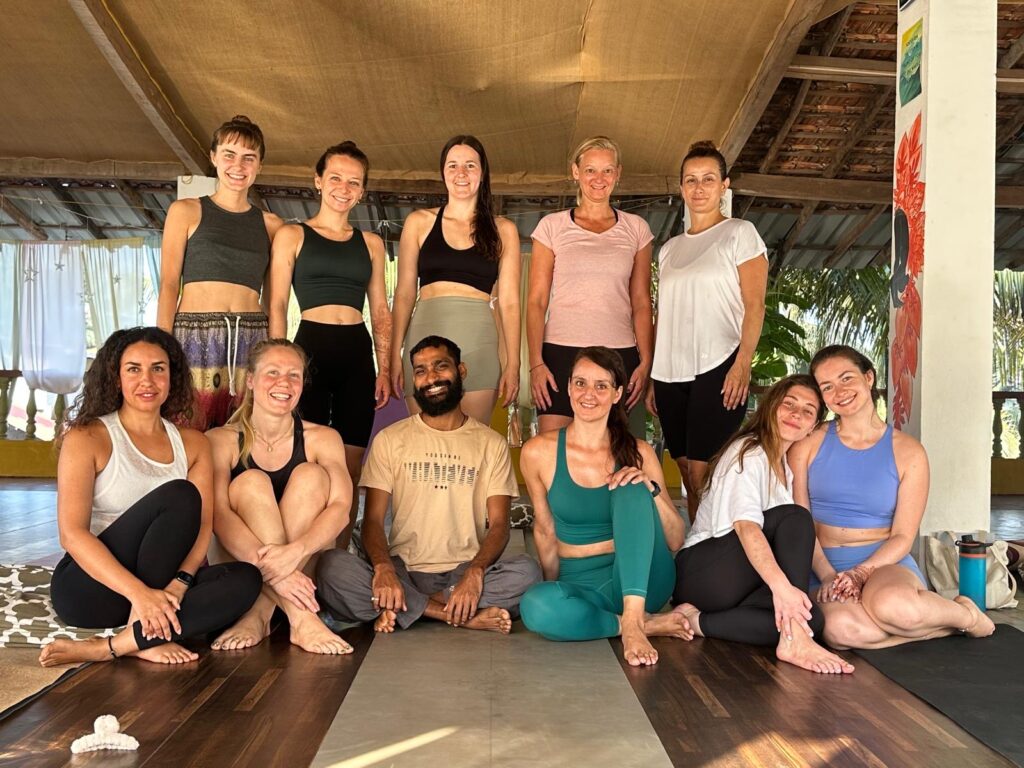
Yoga Alliance Certified 200 Hour YTT
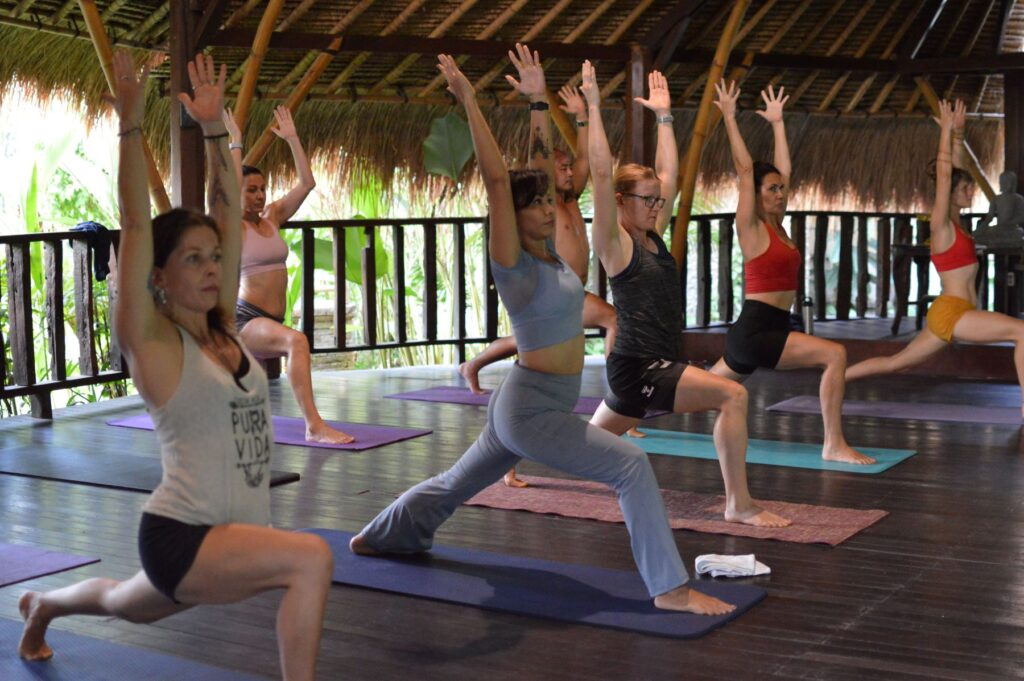
21 Days of Transformative Journey
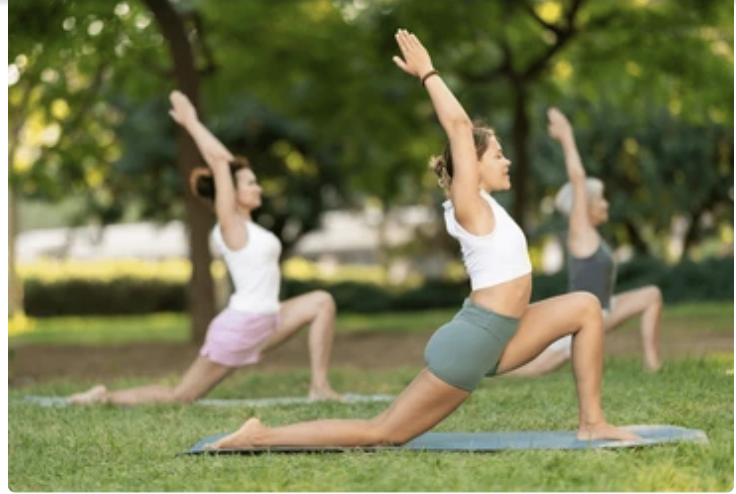
Authentic Yoga Learning
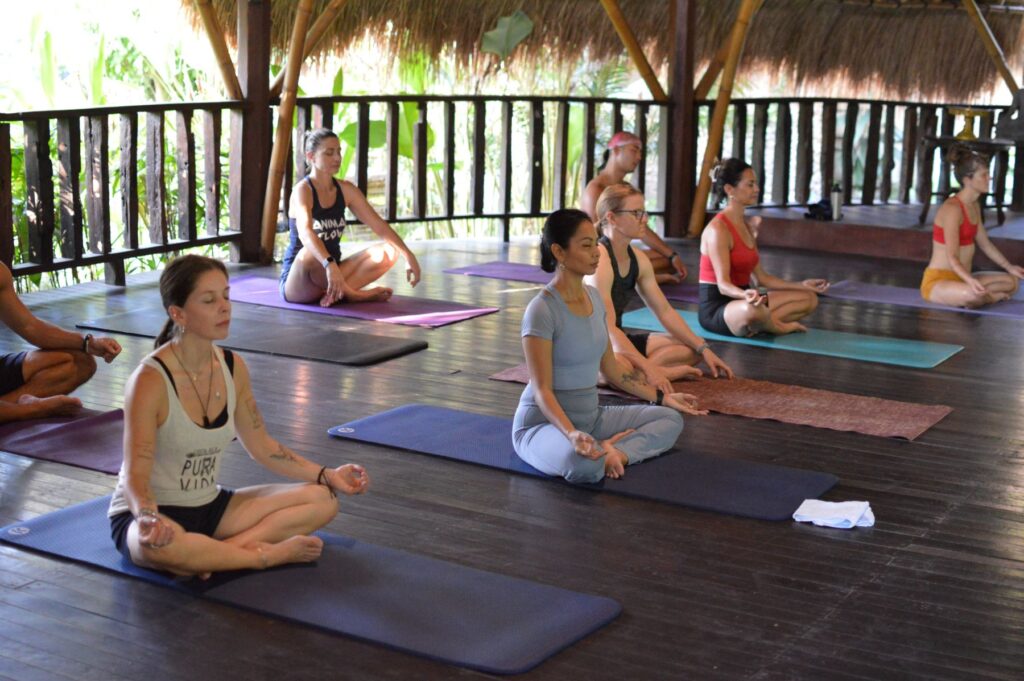
Expert Yoga Teachers
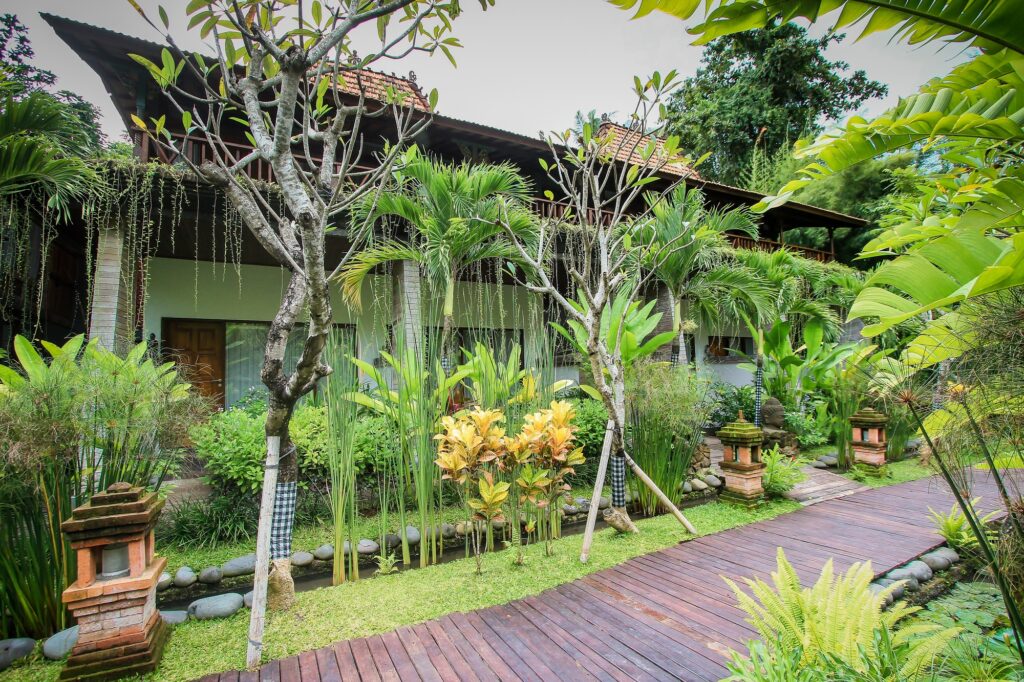
Holistic LIving
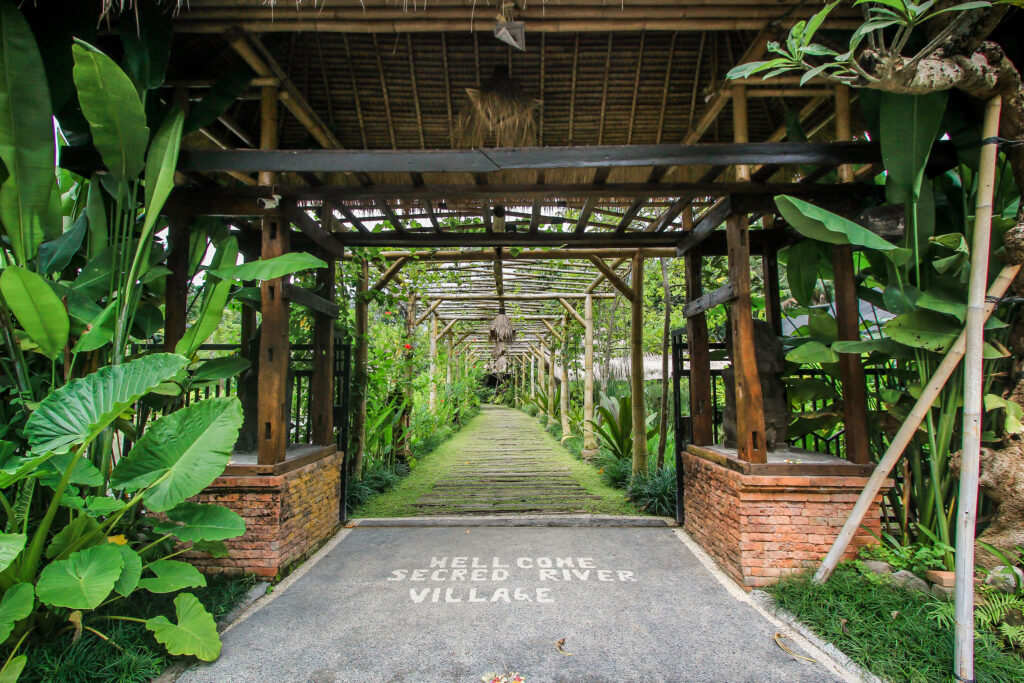
Bali Retreat Setting
200-Hour Yoga Teacher Training Curriculum

Philosophy
- Historical Roots of Yoga
- Ayurveda & The Five Elements
- Paths of Yoga
- Jnana Yoga – the path of wisdom
- Bhakti Yoga – the path of devotion
- Karma Yoga – the path of selfless service
- Raja Yoga – the path of meditation and discipline
- Hatha Yoga Philosophy
- Nadis & Chakras
- Patanjali Yoga Sutras & Ashtanga Yoga
- The Three Gunas
- Hatha Yoga
- Obstacles on the Path and How to overcome them
- How to Integrate yogic wisdom in our daily life

Asana & Alignment
- Standing and Seated Asanas
- Forward Bends and Twists
- Arm Balancing
- Core strengthening & Inversions
- All Postures Modifications to Teach and Practice Safely
- Learn when to breathe in and Breathe out while doing the posture
- How to Increase strength and Mobility of Joints with Hatha Yoga
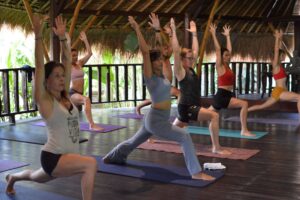
Vinyasa
- Preparing Safe and Energising Vinyasa Sequences
- Transitions & Breath Awareness
- Teaching & Demonstration Techniques
- Adapting to Different Levels
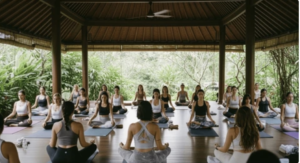
Teaching Skills
- Develop confidence in instructing flow-based classes
- Safe corrections through both verbal and physical adjustments
- Teaching with Safety & Awareness
- How to build a class from warm-up to peak to cool-down
- Creating Theme Based Classes
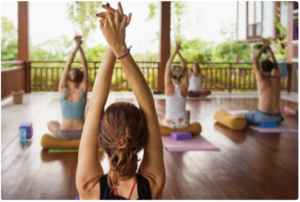
Anatomy
- Learn how to apply anatomical knowledge to your asana practice
- Explore the 8 key joints of the body, their range of motion, how to safely guide students through joint-conscious movement
- Understand the unique anatomical differences in every body
- How this affects flexibility, alignment, and the practice of yoga.
- Compression, Tension & Proportion Theory
- Connective Tissue & Nervous System
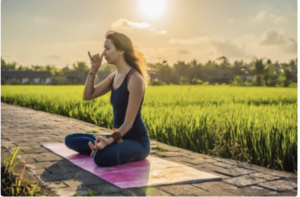
Pranayama
- What is Prana
- Importance of Breath
- Kapalabhati – Cleansing Breathing
- Nadi-shudhi – Alternate Nostril Breathing
- Bhastrika – Breath of Fire
- Bhramari – Humming bee Breathing
- Sheetali – Cooling Breath for Calm mind
- Sheetakari – Cooling Breath
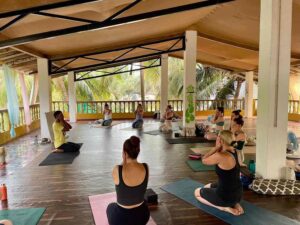
Meditation
- Importance of Silence and Mindfulness
- Yoga Nidra
- Mantra Chanting for Positivity
- Self Awareness through Reflection
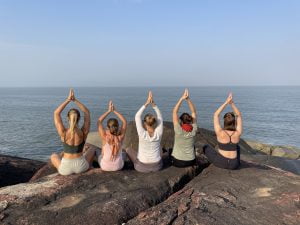
Integrating Yoga in our Daily lives
- Cultivate Mindfulness in our Actions Speech and Actions
- With Love and Compassion to Oneself and Others
- Learn how to live yoga off the mat with authenticity and presence
- Integrate Ayurveda with Food and Daily Routine
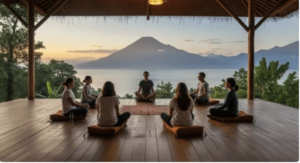
Yin Yoga
- History of Yin
- What is Yin Yoga
- Yin Yang Theory
- Why we practice Yin Yoga
- How Yin Yoga works on Connective Tissues
- Learning the importance of Slow Practice and Mindfulness
- Practiced Once a week in the Evenings with Yoga Nidra
“From the very first day, you’ll teach for at least 15 minutes daily, gaining comfort and confidence in guiding others so you feel Prepared and confident By the end of the training”, you’ll lead a 35–40 minute class for your fellow students for the exam at the end — applying everything you’ve learned in a supportive environment “
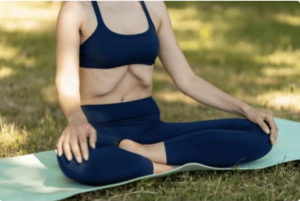
Bandhas – The Yogic Energy Locks
- Introduction to Bandhas
- Jalandhara Bandha (Throat Lock)
- Mula Bandha (Root Lock)
- Uddiyana Bandha (Abdominal Lock)
- Maha Bandha (The Great Lock)
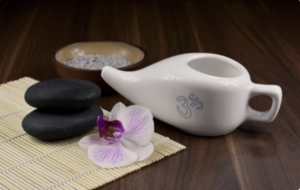
Shatkarma – Yogic Cleansing Techniques
- Introduction to the Cleansing Techniques from Hatha Yoga
- 6 Types of Cleansing
- Jala Neti
- Kapalabhati
- Nauli
- Basti
- Vamana/Kunjal
- Trataka
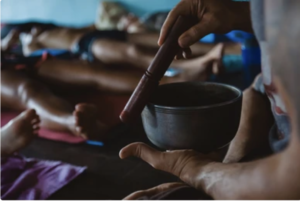
Yoga Nidra & Sound Meditation
- Introduction to Yoga Nidra
- Guiding others in Meditation
- Practiced on Wednesdays after Yin Yoga session for deep Relaxation
200 hour Yoga teacher training Bali 2026
Course Dates | 21 Days |
28th Apr 2026 – 19th May 2026 | |
20th May 2026 – 10th Jun 2026 | |
11th Jun 2026 – 02nd Jul 2026 | |
01st Aug 2026 – 22nd Aug 2026 |
200 hour Yoga TTC Daily Schedule in Bali
Monday to Saturday / Saturday’s – Half day
- Wednesday Evenings 4:45 PM Yin Yoga with Yoga Nidra
- Wednesday Morning 7:15 AM Ashtanga Practice
| 6:45 AM – 7:15 AM | Pranayama & Meditation |
| 7:15 AM – 8:30 AM | Hatha Yoga Practice |
| 9:00 AM – 10:00 AM | Breakfast |
| 10:00 AM – 11:15 AM | Chanting followed with Yoga Philosophy |
| 11:30 AM – 12:30 PM | Learning Asana Alignment Adjustments |
| 12:30 PM – 1:30 PM | Teaching Practice & Sequencing |
| 1:30 PM – 2:30 PM | Lunch Break Rest |
| 3:30 PM – 4:30 PM | Yoga Anatomy/Philosophy |
| 4:45 PM – 6:00 PM | Vinyasa Flow Pracitce |
| 7:30PM – 8:15 PM | Dinner |
Yoga TTC in Bali

Akhilesh
The Founder and Director of Ruh Yoga is E-RYT 500 hrs yoga instructor with 18+ yrs of yoga teaching and practice experience in philosophy, Asanas, pranayama, Yoga Nidra, Hatha, Vinyasa and Ashtanga. I Was introduced to yoga at the age of 17 and started to teach at corporates in Infosys, Dell, Accenture, in 2010 completed my 200hrs teacher training, 500hrs in 2012 in Bangalore and additional 250hrs in Mysore

Varun
Dedicated yoga practitioner with over 15 years of experience, is Certified RYT-500-hour Teacher . His passion for yoga has led him to teach in various settings like Bali, Cambodia, Thailand and Goa Rishikesh

Pankaj
is yoga teacher with an E-RYT 500 certification in Hatha and Vinyasa yoga. His practice began very young in Rishikesh, where he studied under his Guru and many other respected teachers. With a foundation in the traditional teachings of North Indian Hatha yoga, his approach is deeply influenced by the wisdom of the Himalayan regions, particularly the practices rooted in Tibet and Nepal.
As facilitators, We hold a genuine Loving and supportive space where each individual feels safe . Our approach to yoga emphasizes heart-centered living and cultivating a deep sense of inner peace. It is from this grounded presence that the true essence of yoga unfolds
Tranquil Accommodation to Support Your YTT In Bali
Our Packages
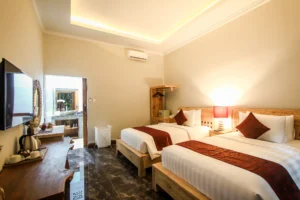




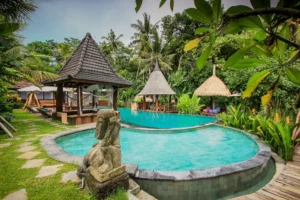
How to apply and book 200 hour Yoga Teacher Training Bali YTTC
How to apply: To apply for the any of our Yoga Teacher Training Courses in Bali
- Please fill up the online application form. We will process your application within one day and let you know if you are accepted on the course.
- If you are accepted on the Teacher Training Course we will email you a confirmation. You will be required to deposit a booking amount of $500 as soon as possible to confirm your place. Your place on the course will be confirmed only when we have received this booking amount
How to pay the booking amount: Once you confirm that you want to go ahead with booking your place we will send you PayPal request of $500. You will receive PayPal email intimation from us with detailed instructions regarding how to pay. Once you have received this, you will be able to pay the booking amount online using your credit card or bank account. Balance course fee should be paid upon arrival to the school.
Cancellation policy : The course fee including the deposit of $500 is strictly non-refundable, non-cancellable and non-transferable. If you need to cancel the course due to unavoidable reasons the booking amount can be adjusted/used in any future course you do with us within one year from the date of booking. To reschedule your course you must inform us at least two weeks before your course start date otherwise you may lose your booking amount fee entirely.
- EARLY BIRD DISCOUNT: $100 early bird discount if booked 45 days early to course in advance.
Arrival & Departure
- CHECK IN: 2.00 pm Afternoon onwards
- CHECK OUT: On or before 10.00 am Morning on the day of your course end date.
Our Location


